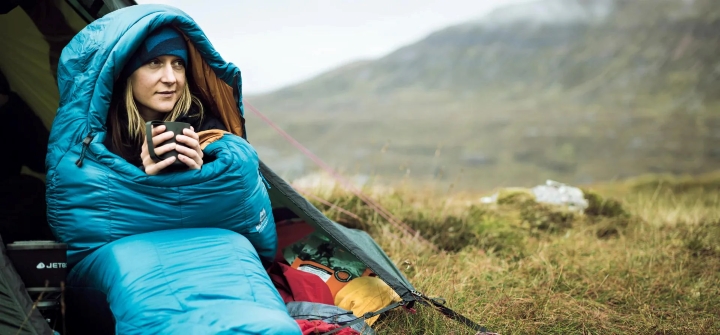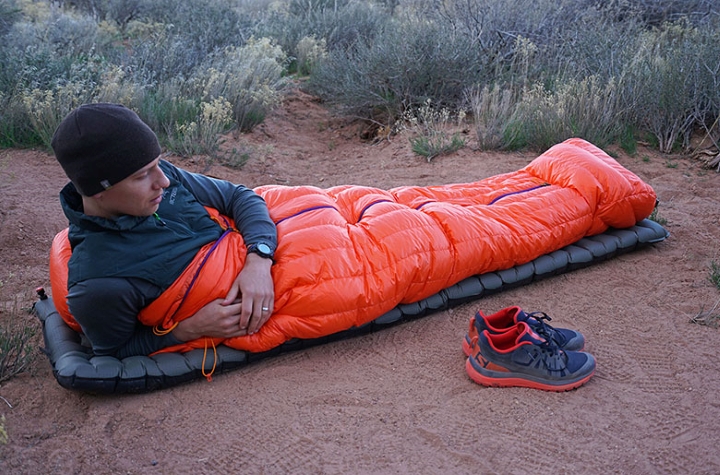Synthetic vs. Down Insulation Sleeping Bag: Which Is Better?
Sleeping sacks are essential camping equipment designed to keep you warm while sleeping in a tent. While this item is crucial for winter camping, having one throughout the year isn’t excluded. In fact, having one is essential for both improved padding and ground insulation.
Coming in a selection of materials and insulation designed for different seasons, this camping gear will keep you warm by trapping the warm air around you, keeping you cosy and comfortable. So, if you still ask yourself ‘Do I really need sleeping bag?’, the answer is pretty obvious don’t you think?! Having one is a necessity for improved comfort and well-being, so considering the best options to find the one for you is paramount.
Types
Synthetic

Gone are the days when synthetic sleeping sacks couldn’t compete with the rest. Nowadays, they are some of the most popular and commonly used ones for countless reasons. First of all, investing in a synthetic sleeping bag provides the utmost insulation and comfort, thanks to the improved technology and materials used. While in the past these sacks were a synonym of poor quality, today it is quite the opposite.
This goes especially to those manufacturers who invest in new technology and product materials to generate improvements in sleeping sack technology. Today’s sleeping sacks range from premium compact camping sleeping bags, jumbo cold weather bags to double size sleeping bags and much more. Generally speaking, these bags are made from polyester and a quick-drying synthetic fill and are extremely insulating even if exposed to wet conditions.
Down

Down is a layer of light and fluffy feathers found underneath the feathers on geese and ducks. These types of feathers are easy to compress; they are breathable and long-lasting, perfect for trapping air. Sacks made from this insulation are perfect for use under cold and dry conditions as they offer increased warmth. Just like in synthetic sacks, these also come in different fillings, which gives you the ability to choose the one that suits your needs the most. The greatest downside of these sacks is that if submerged in water or exposed to heavy rain these sacks will get wet.
Comparing Their Characteristics
Warmth to Weight Ratio
Well, this might come as a surprise to some of you, but the truth is that quite often synthetic sacks for sleeping are way better than down in many terms, but mainly in warmth. Given the fact that down feathers are lighter and should be compressed more to offer the same warmth as most synthetic fills, this means that the ones with synthetic fill can provide you with increased warmth without feeling heavy or bulky. Given the fact that reliable and trusted manufacturers use modern technology, it goes without saying that the newest synthetic sleeping bag designs will perform better even under extremely cold weather conditions.
Water Resistance
As you already know by now, when it comes to choosing the best material in terms of water repellency, synthetic sacks are the winners once again. It’s said that when down is exposed to moisture or water, its ‘feathers’ clump together and reduce the sacks’ water resistance level.
The most important thing you should know is that when exposed to water over a long period of time, or when the water exposure is repeated several times, it can cause permanent damage to the sack. Synthetic fibres, on the other hand, act better when exposed to water and moisture. They are almost impossible to get wet, which increases their water resistance level.
Washing and Maintenance
Since down filling can easily clump, especially when exposed to moisture and water, maintaining and caring for it can be quite hard. Washing a bag with such filling should be done rarely to reduce the chance of decreasing its water repellency and quality. When it comes to washing it, you should do it on a gentle cycle and with a special product designed for down.
Such products will help the bag restore its water repellency and preserve the fill. If possible, you can invest in a sleeping sack cover/liner separately, which will significantly reduce the chances of it getting dirty. If possible, drying and washing such a bag should be done in the dry cleaning, but if planning to clean it at home, you should wash it as stated above and dry it in a larger dryer on the lowest possible setting.
Keep in mind that drying the sack that way can take a few hours, so you should stock yourself with a lot of patience. Washing, cleaning and drying a synthetic sack is way simpler, faster and better. The best thing of all is that no matter how much and for how long you wash these sacks, they will stay in the same condition. They also allow for being dried in the dryer, which is just another benefit you can get from them.
Price
As down-filled sacks are made from natural filling, this explains their higher price tag. Synthetic sacks, on the other hand, are quite pocket-friendly, which makes them the best option for both occasional and more enthusiast hikers/campers.
